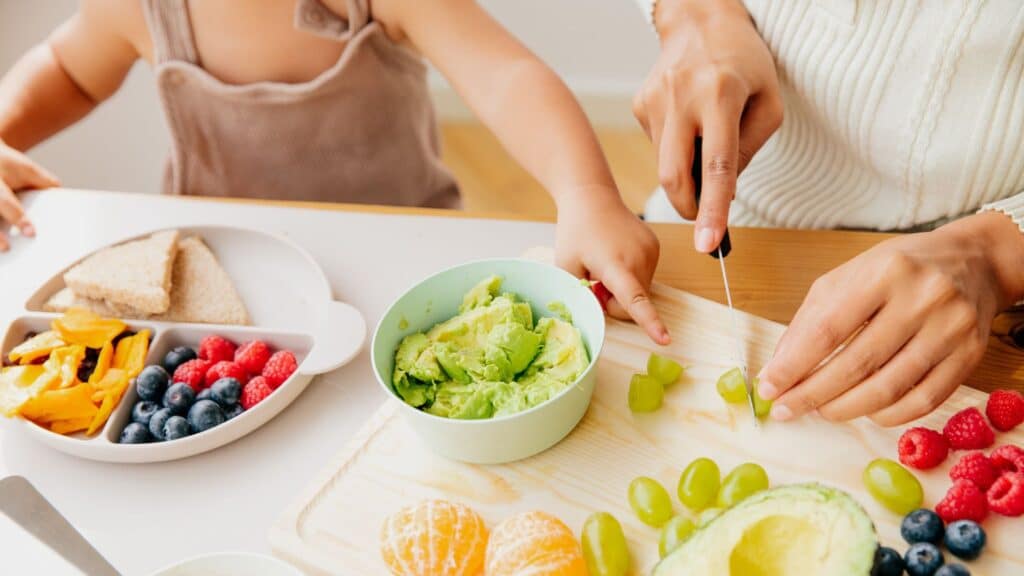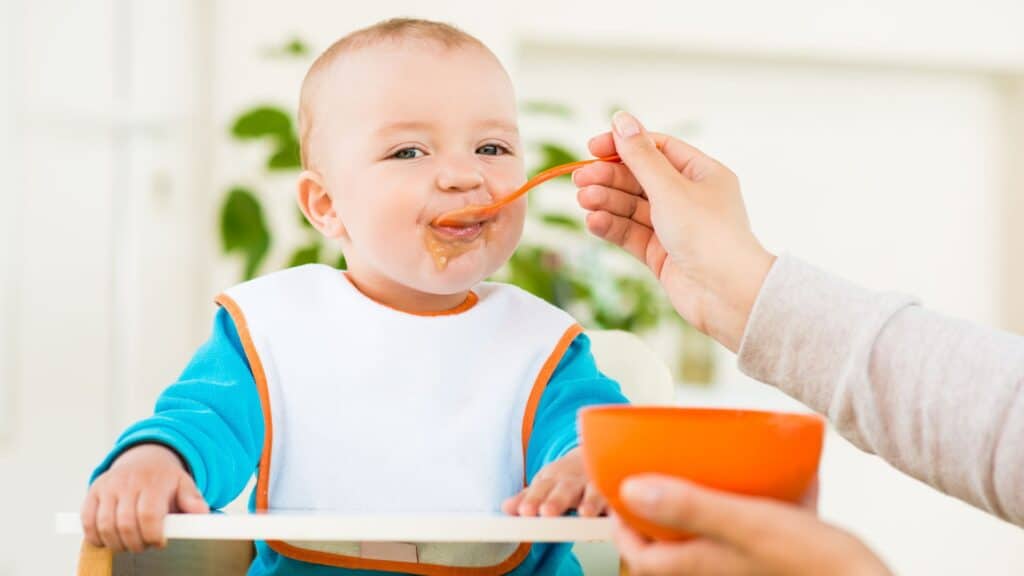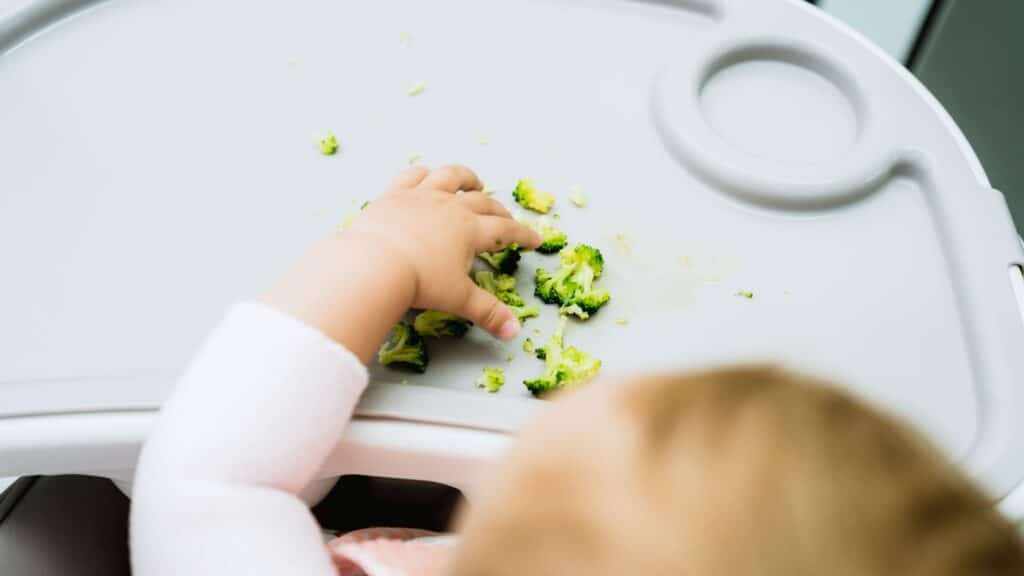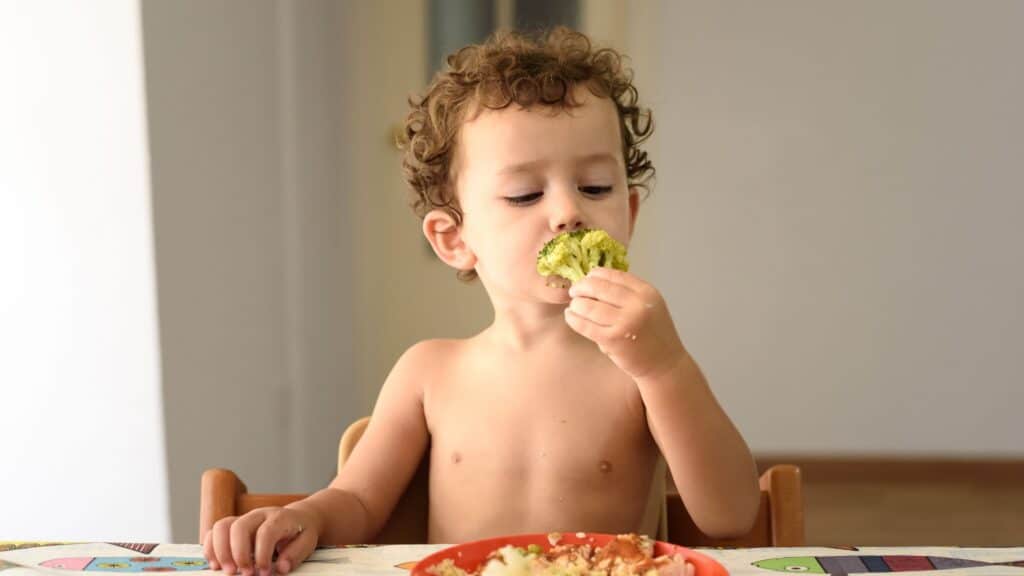Embarking on the exciting journey of introducing solid foods to your baby is a major milestone that opens up a whole new world of flavors, textures, and culinary adventures for your little one. As you navigate this crucial phase in your child’s growth and development, having the right feeding supplies can make all the difference.
In this article, we will unveil the top 10 feeding supplies that will help you transform mealtime into a fun, stress-free, and enjoyable experience for both you and your baby. From a sippy cup to clever food storage solutions, discover the must-have items that will ease the transition to solids and set the stage for a lifetime of healthy eating habits.
So, let’s dive in and explore these essential tools to support your baby’s gastronomic journey!

When to Start Solid Foods
Introducing infants to solid foods, otherwise known as baby-led weaning or complementary feeding, is best done after the baby reaches six months of age [1]. The transition from a liquid diet to a world of varied textures and flavors through baby food is a significant milestone, and timing it correctly is crucial for your baby’s health and development.
Let’s discuss the factors to consider when determining the optimal time to introduce solid foods and the signs that your baby may be ready for this exciting new phase of baby-led weaning.
Age and Developmental Milestones
Pediatric experts generally agree that most babies are ready to begin finger foods around six months of age. However, age is just one factor to consider, as your baby’s developmental milestones and individual needs are equally important.
Before introducing baby food, ensure that your baby can:
- Sit up with minimal support, maintaining a stable and upright position.
- Has the ability to hold their head steady and in a controlled manner.
- Show signs of interest in baby food, such as watching others eat or reaching for items on your plate.
- Exhibit the ability to move baby food from a spoon to the back of their mouth and swallow it rather than pushing it out with their tongue during baby feeding.
Hints That Your Baby is Ready to Start Solids
In addition to the developmental milestones mentioned above, watch for these signs that your baby may be ready for table food:
- Increased appetite: Your baby may seem unsatisfied after nursing or consuming formula, indicating they may be ready for more substantial nourishment. At times like this, you may find it interesting to start making your own baby food for your growing toddler.
- Doubling of birth weight: Most babies are ready for baby food once they have doubled their birth weight, typically around the 6-month mark.
- Curiosity about baby food: If your baby appears intrigued by the food you’re eating and tries to grab it, this may signal their readiness to explore baby food

10 Mealtime Must-Haves When Your Baby Starts Solids
Now that you’ve learned a few essential tips and tricks for a solid food introduction, let’s start by learning about the best meal-time must-haves when baby feeding!
Now, sit back and discover a few tools that will help you start solid foods and ensure that you’re creating a positive and enjoyable experience for your baby.
From innovative baby spoons to baby food makers, these must-have items will simplify the process, promote healthy eating habits, and make mealtimes an enjoyable bonding experience for the entire family. So, let’s dive in and discover the essential products that will support your baby’s gastronomic journey and help create lasting memories around the table.
High Chair or Booster Seat
A high chair or booster seat provides a safe, secure, and comfortable space for your baby to enjoy their meals. When selecting a high chair, look for features like adjustable height and recline positions, ease of cleaning, and a sturdy base. A booster seat is an excellent alternative for families with limited space or those who prefer a portable option that can easily be attached to a standard dining chair.
Storage Containers
As you start preparing homemade baby food, having a variety of storage containers is crucial for keeping the food fresh and organized. Look for containers that are BPA-free, airtight, and freezer-safe. Some containers even have measurement markings and date indicators to help track freshness. Choose from individual portion containers, stackable trays, or reusable pouches, depending on your needs and preferences.
Easy-to-Clean Bibs
Cloth bibs are an essential baby gear for keeping your baby clean and dry during meals and protecting their clothes from spills and stains as they are starting solids. Opt for waterproof, easy-to-clean bibs with a pocket to catch falling food. Silicone bibs are a popular choice, as they can be wiped clean or washed in the dishwasher, while fabric bibs with a waterproof layer are also convenient for on-the-go feedings.

Pop-Up Booster
A pop-up booster is a portable, space-saving alternative to a traditional high chair. These compact seats can be easily attached to a dining chair, providing a secure and comfortable space for your baby to enjoy their meals. Pop-up boosters often feature adjustable height settings and removable, easy-to-clean trays, making them a convenient option for families on the go or those with limited space.
Placemats
Placemats help protect your table or high chair tray from spills and messes, making cleanup a breeze. Opt for non-slip, easy-to-clean silicone placemats or disposable options for on-the-go convenience. Some placemats even feature built-in compartments or raised edges to keep food contained and prevent spills.
Baby Spoons and Fork
Specialized baby spoons and forks are designed with your baby’s safety and comfort in mind. They often feature soft, rounded edges to protect your baby’s delicate gums and a shallow bowl to make it easier to scoop your baby’s food. Look for a baby spoon with ergonomic handles that are easy for little hands to grip and made from BPA-free materials. Some baby spoons even change color when the food is too hot, adding an extra layer of safety when using a feeding spoon.
Bowls and Plates
Plastic bowls and plates designed specifically for babies and toddlers can make mealtime more enjoyable and less messy. Look for options with suction bases or non-slip bottoms to keep them securely in place. Divided plates with separate compartments are great for portioning different foods and encouraging picky eaters to try new things. Choose materials that are BPA-free, dishwasher-safe, and microwave-safe for added convenience.
Serving Dishes
Serving dishes are a practical addition to your baby feeding arsenal, making it easy to portion and serve food for your little one. Opt for dishes with separate compartments or dividers to keep foods separate and prevent mixing. Materials like stainless steel, BPA-free plastic, and silicone are ideal for durability and ease.

Baby Food Steamer
A baby food steamer is a valuable addition to your kitchen arsenal as it allows you to prepare healthy, home-cooked meals for your little one. Steaming preserves the nutrients in fruits, vegetables, and proteins, ensuring that your baby receives the maximum nutritional benefits from their food. Look for a steamer with multiple tiers or compartments, so you can steam different foods simultaneously, saving time and effort in meal preparation.
Sippy Cups and Baby Drinking Cups
As your baby transitions from bottles to solid foods, they must also learn to drink from a cup. Sippy cups and baby drinking cups are specifically designed for this purpose, featuring spill-proof designs, easy-grip handles, and soft, gentle spouts or rims that are gentle on your baby’s gums and developing teeth. Start with a sippy cup or straw cup, then gradually progress to open cups as your baby becomes more confident and coordinated in their drinking skills.
Bonus
Baby Food Maker
Once your baby is ready for pureed or mashed foods, a baby food maker or a food processor becomes an indispensable tool. This versatile kitchen appliance helps create smooth, lump-free purees perfect for babies learning to eat solids. When selecting a food processor, consider size, ease of cleaning, and the availability of different blade attachments. Some models have dedicated baby food settings, making them perfect for parents new to homemade baby food.
Freezer Trays
Once you’ve mastered the art of preparing homemade baby food, freezer trays become essential for storing and portioning meals. These handy trays allow you to freeze individual portions of purees, ensuring that you always have a nutritious meal on hand for your baby. Look for trays with tight-fitting lids to prevent spills and freezer burn, as well as easy-release designs from simplifying the process of removing the frozen portions.

Practical Tips to Help Build Your Baby’s Eating Habits
Building healthy eating habits for your baby is essential for their growth, development, and long-term well-being. Let’s discover a few tips and strategies for fostering good eating habits, as well as recommended baby-feeding products that can simplify the process and ensure a successful transition to solid foods.
Establish a Routine
Creating a consistent mealtime routine is the foundation of good eating habits. Set specific times for meals and snacks so your baby becomes accustomed to a predictable schedule. Ensure your baby is seated comfortably in their high chair and provide a calm, relaxed atmosphere during feeding time. This will help your baby associate mealtime with positive experiences and reduce the likelihood of fussiness or resistance.
Encourage Self-Feeding
As your baby grows and gains confidence in their eating skills, encourage self-feeding by providing them with age-appropriate utensils and baby-sized serving bowls. This fosters independence and helps your baby develop fine motor skills and hand-eye coordination. Be prepared for some messiness during this learning phase, and remember to praise your baby’s efforts to keep them motivated.
Offer a Variety of Foods
Introducing your baby to a wide range of flavors and textures is crucial for developing their palate and encouraging adventurous eating habits. Rotate between different fruits, vegetables, grains, and proteins when starting solid foods, and don’t be discouraged if your baby initially rejects certain items. It may take multiple exposures before they accept and enjoy new tastes.
Be a Role Model
Your baby will learn from your own eating habits, so it’s essential to model healthy choices and behaviors. Enjoy a variety of nutritious foods in front of your baby and demonstrate proper table manners, such as chewing with your mouth closed and using utensils correctly. Engaging in family meals where everyone eats together can also be a powerful way to reinforce positive eating habits.
Choose the Right Baby Feeding Products
Investing in high-quality baby feeding products can simplify the process and ensure a successful transition to solid foods. Look for durable, easy-to-clean items, such as a sturdy high chair with adjustable features, spill-proof sippy cups, and baby-sized serving bowls with non-slip bases. These products will make mealtimes more manageable and support your baby’s developing eating skills and habits.

Conclusion
Equipping yourself with the proper feeding supplies is essential to ensure a smooth and enjoyable transition as you introduce your baby to pureed food. The top 10 feeding supplies we’ve discussed in this article will not only help create a positive and nurturing mealtime environment but also support your baby’s growth, development, and long-term well-being.
Remember, patience and consistency are key as your baby learns to navigate the world of new flavors and textures. By investing in these essential feeding items and fostering healthy eating habits from the start, you’ll set the stage for a lifetime of enjoyable and nutritious mealtime experiences for your little one. Happy feeding!
If you have any questions, feel free to leave them in the comment section below.



